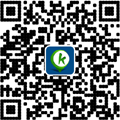
AA: I'm Avi Arditti with Rosanne Skirble, and this week on WORDMASTER: getting the most out of textbooks for English learners. Maria Spelleri, who teaches English for academic purposes, goes so far as to talk about getting "intimate" with a textbook.
MARIA SPELLERI: "Well, you know, many international students, when they come to the United States, even though they may be very good English students, have learned English at a very high level, they're just not quite able to manage the textbooks that they face in college. And that's really because these books are very tough. They're intimidating. They're not user-friendly, they're very dense, unattractive, oversized, heavy. I think students look at these things and just imagine all the potential for forgetting that lies within the covers of those books."
RS: "Do you want to be on intimate terms with your textbook?"
MARIA SPELLERI: "Well, I think if you want to be successful in college, you do. And you need to build familiarity with a textbook, and that's going to help you reduce that psychological intimidation and see your textbook as just another learning tool, like your calculator or whatever."
RS: "How do you go about doing that?"
MARIA SPELLERI: "Well, you have to really explore your textbook, you have to make an effort, and you've got to do this in the first week of class because after that it's almost too late. Start at the beginning of the book. First, you should read the notes to the student, which is a section that I think almost everybody passes up as something irrelevant. But you can find great tips for study success, for how to use the book, other materials like Web sites and supplemental study guides that can help you with the course.
"Proceed to the table of contents. Again, a lot of people skip the table of contents unless they're just looking for a certain page. But the table of contents, an overview of that, can tell you how the book is set up, and following the same pattern within each chapter. And the student has to get familiar with the terminology that the book uses: does it use units, chapters, sections, parts? Because this is what the professor is going to use in the course.
"So many of the freshman-level textbooks are basically introducing the new vocabulary of a discipline. So the back of the book has a glossary. I mean, many students don't even realize that's back there. So get to the back of the book, page four hundred five, page five hundred, and notice the glossary.
"And the appendices, also. This is where you're going to find your basic information that the textbook writer is assuming you already know -- for example, a table of elements for a chemistry book, or MLA [Modern Language Association] formatting for a literature book."
RS: "Textbooks are written in a different language. Textbooks are not written as if we're speaking to one another. How do you advise students to get through that, so they'll understand the textbooks, the writing in the textbooks, which tends to be very complex?"
MARIA SPELLERI: "That's a great question. The very first thing a student has to do is to decide that they are going to be interactive with their textbook. They are going to build this friendship by listening to the textbook and communicating back to the textbook. And this means reading interactively. One method of doing this is the SQ3R method which is Survey, Question, Read, Recite and Review. And it's a way of attacking your textbook, and attacking your reading, kind of a methodical way.
"You start with a survey, which is looking through the assigned reading, the chapter or the unit, looking at the pictures, reading the captions, reading the headings, the subheadings. And that really primes your brain for what's coming, and once you're more receptive, it makes the comprehension go much easier for you as well."
AA: "And what's the next step from there?"
MARIA SPELLERI: "Well, to question. As you are surveying, you need to question. Let's say, for example, you're reading a psychology text and you see a heading in a chapter, or a subheading, that says 'situational and dispositional shyness.' You should automatically form a question in your head: what's the difference between those two?
"And as you form these questions in your initial survey, and then you go back and move on to the next step, the reading, you're going to be looking unconsciously for the answers to those questions. It's this kind of brain priming that helps the reader stay engrossed in the material that otherwise is kind of flying at them and they're not really comprehending it."
AA: Maria Spelleri teaches English for academic purposes at Manatee Community College in Venice, Florida. We'll have more from her next time. That's WORDMASTER for this week. For more advice about learning English, go to voanews.com/wordmaster. And our e-mail address is word@voanews.com. With Rosanne Skirble, I'm Avi Arditti.












